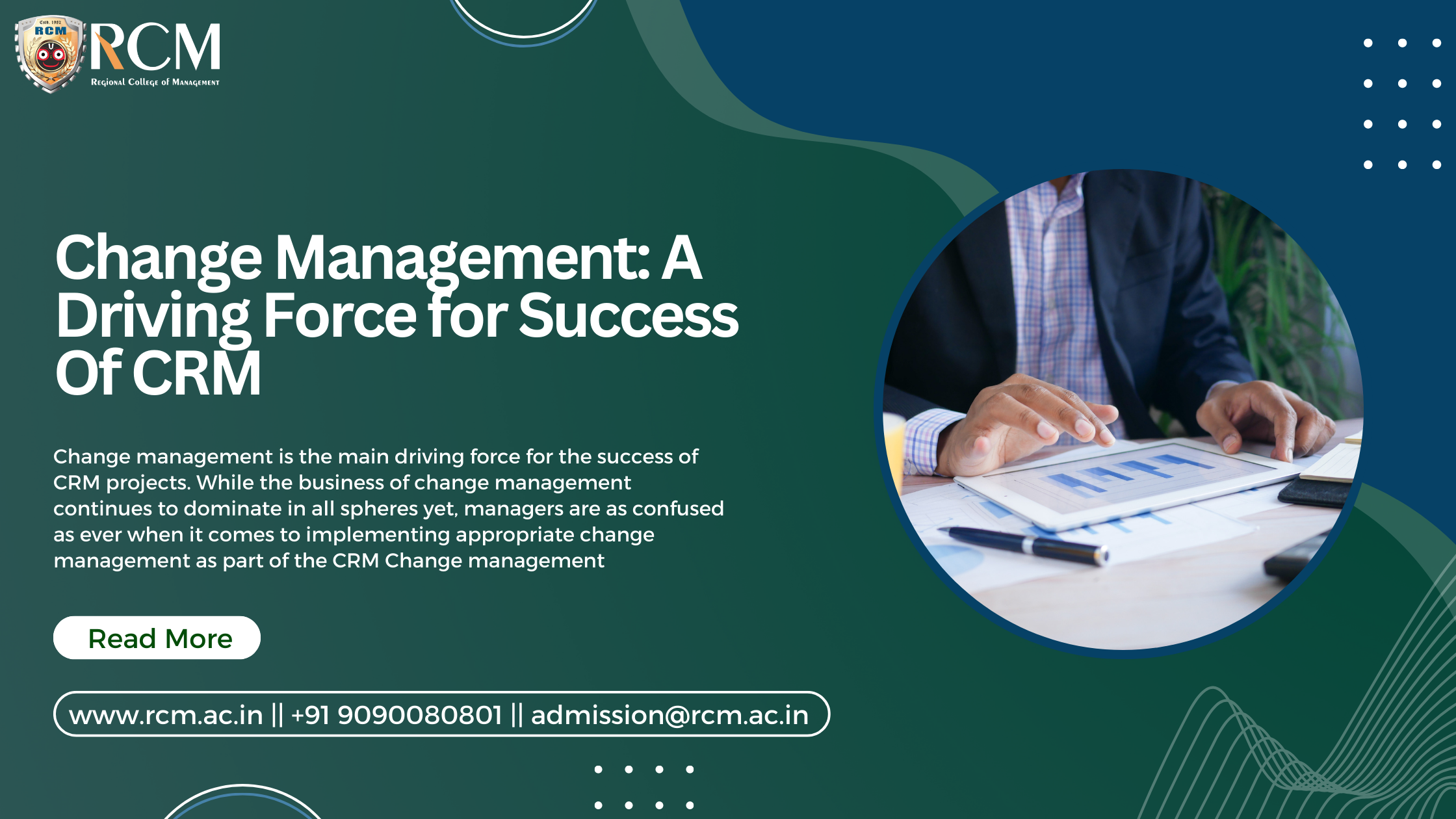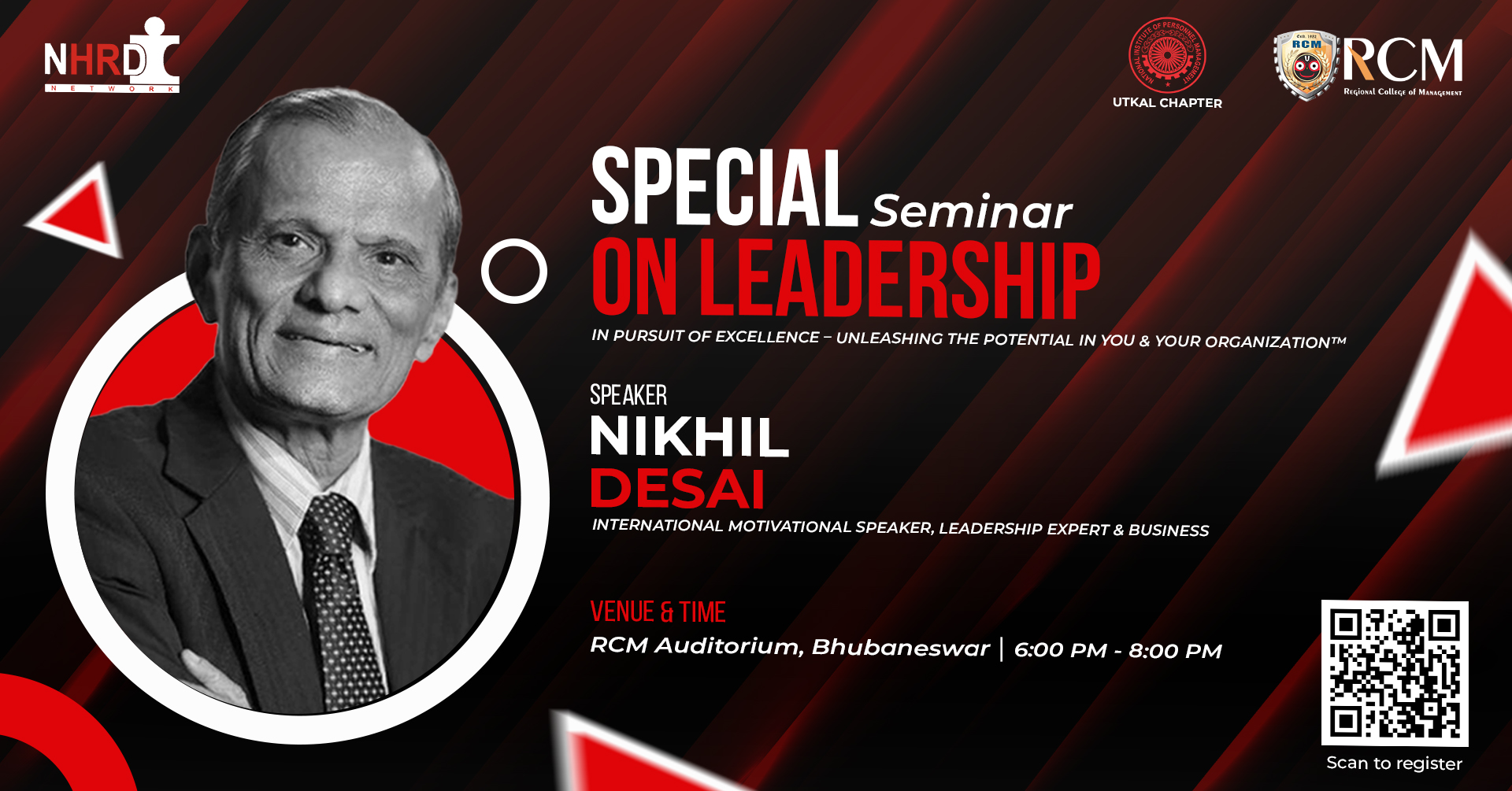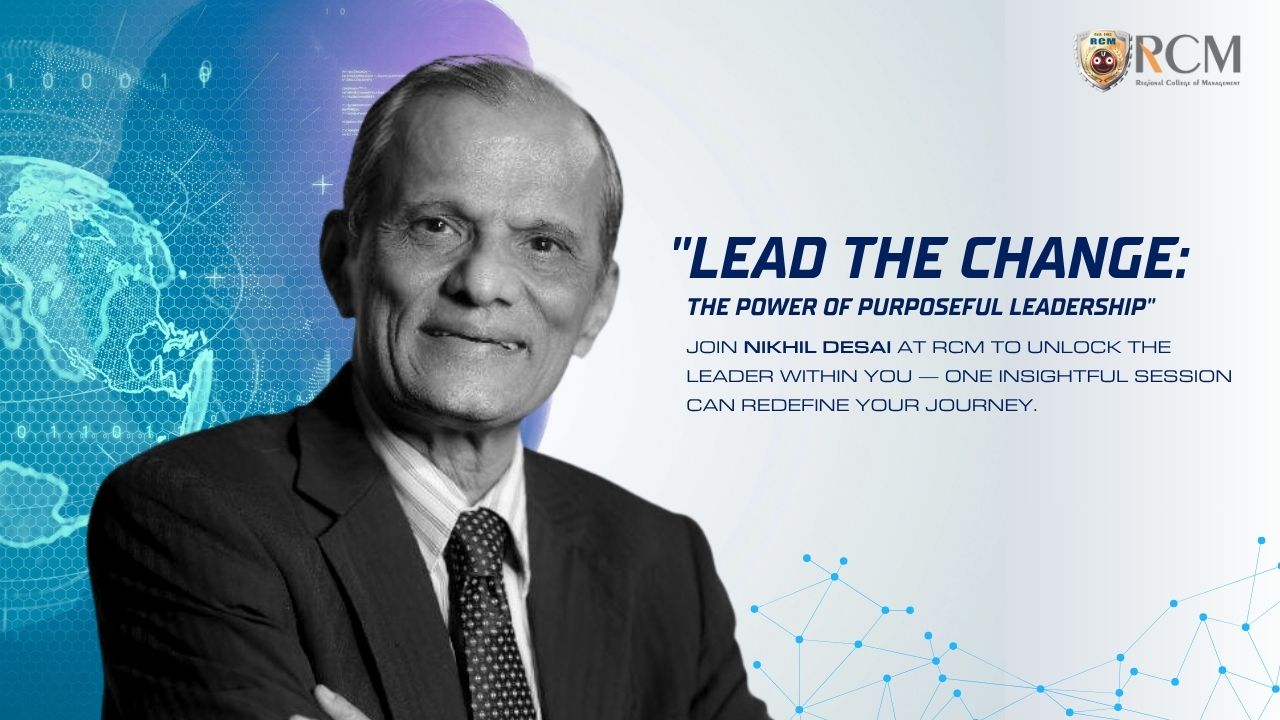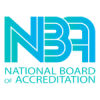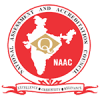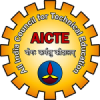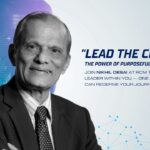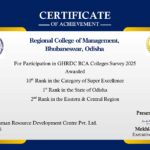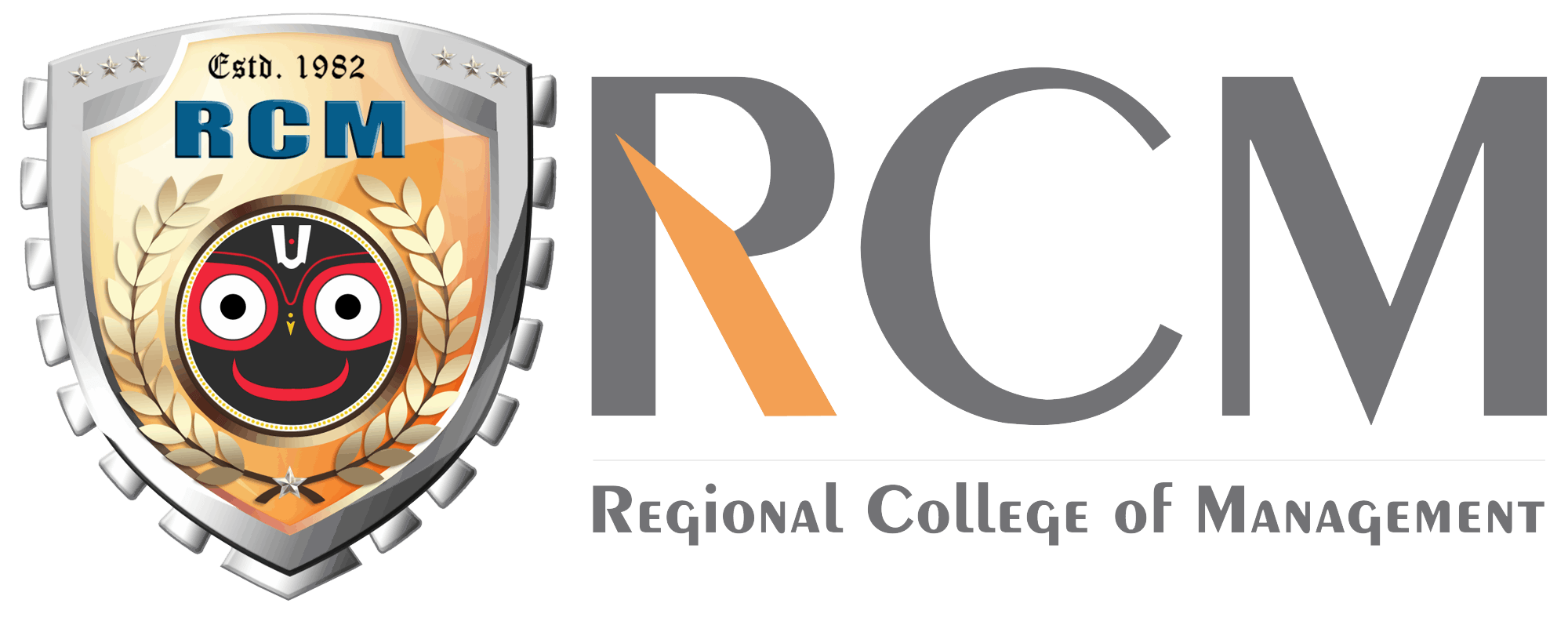Written By, Dr. Hemant K Panda
Professor and Principal || Regional College of Management, Bhubaneswar, India
Abstract:
Change management is the main driving force for the success of CRM projects. While the business of change management continues to dominate in all spheres, managers are as confused as ever when it comes to implementing appropriate change management as part of the CRM Change management within the CRM context is all about getting users to adopt new business processes and practices and the technology that enables these processes and practices. Change management should be viewed as a central part of CRM to receive the attention it deserves.
CRM strives to make the entire organization customer-centric and this new orientation mandates systemic changes throughout the organization. Successful change management comprises five key initiatives: selling change internally, creating an appropriate infrastructure for change management, CRM-relevant training, reconfiguration of the organization structure and performance assessment criteria, and a remolding of the existing incentive systems. The role of the HR department as a facilitator for this change should never be underestimated.
Introduction
Customer Relationship Management succeeds only in whetting the imagination of academics as well as business leaders. It has been conceived in three different areas i.e. technology. new process and strategy. Though it has a proportion of each of these, it is first and foremost a customer-centric philosophy, as old as the marketing concept itself.
For an ideal CRM world, this philosophy translates into a business strategy with the application of information technology and appropriate business processes. The output (again in an ideal world), is a flawless, constant, outstanding customer experience across various touch points which transforms into maximizing the relationship capital of the firm.
Effective CRM practices can mean the difference between the success and failure of a business across all industries, particularly for mid-size enterprises. Today, more and more companies are seeking to understand the concept and mechanism of CRM.
What is CRM, is it a new jargon in our vocabulary or is it really a new paradigm? The current literature is full of definitions and descriptions. Most definitions touch on two important aspects i.e. -relationship and information technology. Thus, we may conceptualize customer relations management (CRM) as ‘CRM is the information technology face of the business processes that aim to establish enduring and mutually beneficial relationships with customers in order to drive customer retention, value, and profitability up’.
The definition underlines the fact that CRM is meant for a common and equal good of the two stakeholders and their customers It calls for capturing pertinent data about the prospective and current customers with respect to their buying patterns, shopping behavior, and usage habits of the products and services and to use the information to commence a two- way dialogue with them.
If the essence of CRM is customer and continuity, the term CRM can also be any of the following cognate marketing terms:
• Caring Relations Management (CRM)
• Continuous Relations Management (CRM)
• Creative Relations Management (CRM)
• Customer Retention Management (CRM)
• Customer Return Management (CRM)
• Cost Reduction Management (CRM)
• Cost and Return Management (CRM)
In more ways than one, CRM represents a logical end of the philosophy that the business should be customer-oriented (Gamble et al, 2000, Payne 1997). As can be seen from the following table below it traversed successive strains of thoughts to reach what is now viewed as a new business paradigm.
Table
Source of Ordainment Economy Stage Creation or Output
Nature COMMODITY Needs
R&D and Creativity MANUFACTURING Wants
Sales & Promotion Mix SEWNG Desire
Marketing Mix & Lifestyles MARKETING Demand
Customer Care SERVICE Preference
CRM and IT EXPERIENCE Retention
The above table also summarizes the marketing evolution culminating in the CRM. For instance the early marketing paradigms prevalent until the sixties, ordained marketers to satisfy customer needs that were essentially nature-created. Later in the seventies. the marketing functions served the customer’s wants that were nothing but ‘specific solutions’ to the needs and were the outcome of the marketing initiatives. Marketing thoughts of the eighties devoted themselves to meeting the higher, more lifestyle-oriented demands and expectations of customers.
These were the result of the social and economic environment. The nineties witnessed the most potent force of our times, information technology. Naturally, marketing thoughts focused on how to leverage the same and serve the customers (Kotler, 2000). CRM thus, represents ‘the marriage between the customer orientation and the emerging information technology to produce a memorable relationship experience to the marketers as well as to the customers’.
Several firms have implemented CRM, in spite of the fear of falling prey to a marketplace of commoditized products and increasingly value-conscious consumers. The failure of CRM can be due to several factors – lack of top management support, difficulties in data integration, fuzz objectives and metrics, and many more. Computer trade publications and several Website articles by the thousands tell us what is wrong with CRM. One of the major causes of failures regardless of industry, the geographic locations of companies surveyed, or who collects the data, is inappropriate change management or the so-called
people issues. A 2002 CRM forum survey of 700 practitioners, CRM suppliers, and consultants also points to the importance of people issues in CRM. 29 percent of the respondents indicated organizational change as the biggest issue preventing the delivery of CRM benefits, followed by company politics or inertia (22 percent).
The survey also found that only 2 percent of the failure could be laid at the software’s doorstep. In the HBR article mentioned earlier, Rigby, Reichheld, and Schefter cite findings from another survey wherein four percent of the managers cited software problems as the reason for CRM failure as against an overwhelming 87 percent who pinned the failure of their CAM programs on inadequate change management. Therefore, if the implementation record of CRM projects is to improve, the ingredient of change management deserves immediate attention.
Change Management Initiatives
CRM involves a radical departure from the existing configuration. the practices. the processes. and the organizational structure of a company. Extensive effort is therefore needed to enable people to deal with the changes. It is said “When CRM is introduced in a work environment it causes shock waves of disruption to emanate from the initial points of impact. These points of impact are the physical and political locations where the system is actually introduced and has its effects on the people it touches.” (Source: ODR white paper, Darryl Conner.2001)
What change management initiatives a company should adopt in the CRM context? In today’s management world, change management has become one of those topics that people pay a lot of money to attend seminars on, or get paid a lot of money to write weighty books about, but few can put their fingers on. Despite these, most managers are dumbfounded when faced with the prospect of actually implementing change.
In a simple way, we can say change management within the CRM context is all about getting users to adopt new business processes and practices and the technology that enables these processes and practices. Change management should be viewed as a central part of CRM to receive the attention it deserves. This is shown in the figure below:
CRM Technology
• Hardware
• Software
• Data Mining
• Data Integration
Change Management
• Selling Change
• Creating Change Infrastructure
• Training
• Reconfiguration of Organizational Structure and Performance Assessment
• Remoiding incentive Systems
Customer Strategy
• Segmenting and targeting
• Campaign Management
• Metrics
• Processes


As indicated in Figure 1, change management is dictated by the CRM strategy a firm decides upon and is impacted by the technology solution and the customer strategy that results from the CRM strategy. The CAM strategy should be a formal document stating how the firm will achieve its CRM vision, CM vision is a picture of how the organization would like to be perceived by its targeted customers. Vision can never be a bottom-up initiative; it is a product of senior management’s strategic thinking derived from market scanning and the firm’s mission statement.
A sound strategy is based on an honest assessment of the firm’s resources and capabilities, which then shape the goals and objectives comprising the vision. In assessing firm capability, particular attention should be paid to the existing culture and prevalent business processes.
If the organizational culture is not customer-focused or if most of the business processes are ad hoc and haphazard, the firm is clearly not ready for a CRM solution. It will need to spend a significant amount of time and resources toward change management before implementing CRM. Change management comprises five broad initiatives:
- Selling change to internal customers involves a committed and well-resourced internal marketing program focused on promoting change.
- Change infrastructure refers to identifying the players in the change initiative and a definition of their roles. It involves picking people who believe in the project, can enthusiastically advocate it, and have the requisite clout to make things happen.
- Training needs to be undertaken to ensure that the contemplated relevant change is inculcated by every person within the organization. It engenders altering the employee mindset to make the organization more customer-centric as well as imparting the specific skills needed to function effectively under the new business processes, designed with appropriate CRM metrics in mind.
- The recast organizational structure and performance assessment measures should ensure that the CRM strategy is internalized and practiced across the organization.
- By modifying the existing incentive systems, the organization aligns employee behaviors with the CRM doctrine, thus creating congruence between desired behaviors and CRM objectives.
So merely deciding to invest in a CRM system is not going to make a non-marketing-driven organization customer-focused and more profitable overnight. In his five-year study involving the voyage of 28 companies from Good to Great, Jim Collins concludes, “Technology and technology-driven change has virtually nothing to do with igniting a transformation from good to great. - Technology can accelerate a transformation, but technology cannot cause a transformation” (emphasis in original). Therefore to have a successful CRM implementation changes at several levels within the organization – organizational, managerial, marketing, sales, and technical are mandatory.
- The change management initiative should therefore involve everyone within the organization, not just IT and marketing. An analysis of scores of CRM successes and failures suggests that the most successful companies have worked for years at changing the structures and systems before embarking on CRM. Thus successful change management is a holistic process. It impacts every department and every division within an organization and its success is
predicated upon everyone actively supporting the new strategy initiative. Establishing shared cross-departmental enterprise goals and objectives is therefore essential to active cooperation during the change management process. The general management is applicable to CAM as well.
Selling Change
The active support and campaigning of top management is highly needed for the success of the change management initiative. During change, prevailing cultural issues are the most likely ones to disrupt the project. Leadership style and the ability of leaders to implement change become essential factors.
Senior management needs to be rock-solid in its resolve for change if it is to acquire organization-wide commitment to the CRM initiative. This involves a carefully engineered program of internal marketing. People at the senior level need to appreciate that change is both an institutional voyage and a personal one Each individual affected by the initiative needs to be informed of how their work will change, what is expected of them during the various phases of change management, how their performance will be measured, and, most importantly what success and failure of the CRM program would spell for them and those around them.
Therefore it is highly required to communicate to employees what the company is trying to achieve and why. A well-prepared communications plan will allow employees to understand the reasoning behind CRM and encourage adoption. The benefits of CRM need to be spelled out in both rational as well as emotional terms.
For successful CRM getting the internal customer buy-in and seeking employees’ inputs in developing the processes for strategy strengthens commitment to CRM success. Several firms achieve this by developing a sponsor group that includes representatives from all levels of the organization to help sell the program internally.
The sponsor group is responsible for coming up with structured, disciplined approaches and well-defined tools for driving change. The group conducts brainstorming sessions, documents all inputs, releases frequent status reports and hosts kick-off and regular milestone meetings with the frontline staff responsible for using the system.
The thrust that drives customer-centric firms is the loyalty, commitment, and enthusiasm of the workforce. By making it clear to internal customers how the new strategy will help them to be more effective in serving customers in the long run, a firm can enhance the eagerness of its workforce to adapt to the change. To transfer ownership of CRM at every level within the organization, employees need to appreciate how their individual actions result in making the new strategy work.
Change Implementation
The mammoth change often needed for CRM projects to succeed requires the coordinated effort of several individuals within the organization. It is therefore necessary to put in place a process that identifies key individuals to drive the change and defines their roles in the process.
The various roles to be played by various individuals include: the change agent (advises on the methodology of the change effort and trains decision-makers and performers on this
methodology); team leaders (make sure project activities are assigned and completed at the team level); content experts (advise on specific topics such as work procedures, software, and compensation policies); steering team (provides oversight, garners stakeholder support, and clears roadblocks to various elements of the change management initiative; and project managers (ensure that project activities are assigned and completed, coordinate the work of several teams, and serve as liaison between the project teams and the steering team.
An important consideration in selecting people to spearhead the change initiative is their level of cultural intelligence. Cultural intelligence comprises of knowledge of existing culture, the propensity of culture change within the organization, and an appreciation of the political considerations involving change. But the most crucial aspect is the mental makeup of the change agent.
The change agent needs to be a leader possessing a high level of personal change flexibility as well as positive beliefs as to what makes change initiatives successful. Indicators of flexibility include traits such as optimism, innovativeness, and purposefulness. self-assurance and a collaborative orientation. Successful change leaders realize that people may not be willing, able or ready to change.
They believe that commitment must be built for successful change and they distrust the efficacy of consent in bringing about change. These approaches cause them to devote significant time and energy to developing and implementing the change plan.
Training
Several software companies observe that 75 percent of the investment in a CRM project is change management. and 25 percent is software implementation and consulting. Change management is a painful process requiring new perspectives, responsibilities, team setups, and behaviors, and it’s essential that HR and training are highly involved in synchronizing and supporting these activities.
Sadly, training is usually the most under-budgeted area in CRM implementation. Acquiring CRM technology accomplishes nothing without ensuring that the attitude shift conducive to CRM has been inculcated and that the skill sets needed to optimally use the technology are present at every level_ Very often, companies forget that ultimately it is people who implement the CRM initiative.
The survey conducted by crmindustry.com, in 2001 indicates that 63.2 percent of the companies surveyed did not have a formal training program in place to help gain employee acceptance and usage of CRM applications. but only 11.5 percent of companies reported this as their biggest internal challenge. Without adequate training, it is difficult for those responsible for making CRM happen to take appropriate ownership of the program.
For successful CRM implementation motivation, training, and user-friendliness are key components. Though training objectives include basic competency with the software system interface and operation more important is mindset training needed for delivering a seamless high-quality experience to customers on a consistent basis.
This needs a change in employees’ frame of mind so as to have remarkable habitual customer-centered behaviors. The operational skills by which to serve customers optimally can only be imbibed after the transformation to a customer-centered mindset has been achieved. Training needs to be designed with both the CRM processes as well as the strategy in mind
so that the people who will be using the new system know not only how to use it but also for what purposes it is used.
Training for CRM can never be a one-time exercise. Its ongoing process is conducted at every level to ensure that the organizational change so essential to CRM is achieved and sustained.
For successful CRM, training should begin well in advance of launch, and periodic training after rollout should be designed and delivered. Also, for new employees, there should be continuous training programs. So for successful CRM projects set aside 10% to 20% of their overall budget and plan 1 to 2 full days for training for each user when the system is rolled out.
Organizational Structure and Performance Assessment
The next aspect of change management involves an assessment of various managers’ duties and responsibilities under the CRM mandate and a reconfiguration of performance measures. Change management includes a thorough evaluation of the existing organizational structure so as to determine the changes necessary for optimal CRM delivery. For instance, business units may need to be reconfigured around customer segments as opposed to product or geographically derived organizations.
Under the CRM policy, an executive must be responsible for each major process rather than functional pieces of it. When departments such as sales, marketing, production, and finance operate as functional stovepipes, the cooperation necessary for cross-functional information flows and joint customer-centric initiatives needs to be consciously created by putting in place a reconfigured organizational structure and instituting a fresh charter of duties and responsibilities that resonates the various business processes defining the customer experience.
The guiding belief in the redesign of structure and performance measures should be customer-centrism. HR needs to ensure that the performance appraisal and incentive systems put in place under the CRM policy translate into customer-focused behaviors on the part of everyone within the organization.
Remolding Incentive Systems
Given the massive time and financial commitments made to CRM, a company would want to ensure that employee behaviors are in accordance with established metrics and that those employees who perform in conformance with the new metrics and strategy are duly rewarded. For the right kind of incentive system, every employee should want to do more and be better. It is significant to build a reward-based system that includes many different kinds of rewards.
The easiest reward is the compensation reward but others such as giving greater authority, providing recognition, allowing sabbaticals, and profit sharing could also be considered provided the particular employee recognizes the reward as such.
Changes in incentive systems may require a shift from individual rewards toward team-based rewards. In the CRM context, there is some evidence to suggest that systems that reward individual achievement can inhibit the effective implementation of the relationship marketing paradigm. It is the task of HR to redesign employee assessment and reward structures to promote internal team-based incentives that promote the collective attainment of CRM objectives.
Conclusion
Over the years, volumes worth of data have appeared on the dos and don’ts of CRM. Vendors and CRM consultants persistently come up with tastier carrots and tall promises in the hope of selling their wares. By most accounts, while the CRM marketplace is expanding, the CRM project success rate is not.
Earlier the main focus of CRM has been on technology, with the implicit assumption that software will in some miraculous way solve the problems inherent in retaining an ever more demanding customer base. This approach ignored the human factors that intrude on the Organization’s ability to execute a collaborative strategy like CRM. Attempting to develop a CRM strategy without first addressing the people’s issues will only invite disaster.
A carefully thought out and creatively designed program of change management takes into consideration the human issues surrounding CRM. The CRM strategy often necessitates revolutionary changes in culture, organization structure, behaviors, teams, and performance appraisal and incentive systems. For effective and efficient change management ensure that the internal customers of an organization are optimally equipped to interact (directly or indirectly) with its external customers. How much an organization implements such optimal interactions is the ultimate facet of CRM success.
References
- E. Almquist, C. Heaton, and N. Hall, “Making CRM Make Money,” Marketing Management, May-June 2002, pp. 17-21.
- D. Stresing, “Taking ‘Softer’ Issues Seriously,” CAM Buyer. July 1, 2004, available from ww.crmbuyer.com /story/34863.html; accessed July 9, 2004.
- S. Kale, “Learning from CRM Failure” Casino Journal, 16 (101. October 2003, p. 47,63.
- S. H. Kale “Appreciating the Role of Change Management in CRM”, Implementation of CRM
- See D. Rigby, F. Reichheld, and P. Schefter, “Avoid the Four Perils of CRM, Harvard Business Review, 80 (2), 2002, pp. 101-109 or Ernst & Young’s 2001 Report on Technology in Banking and Financial Services
- See W. McEwen, is CRM All Hype,” Gallup Management Journal, April 22, 2004, available from http://gmj.gallup.corn; accessed July 9, 2004.
- D. Conner, “Managing the Human Aspects of CRM Projects: Installation vs. Realization,” ODR White Paper, 2001.
- L Goff, “Change Management,” Computer World, (February 14), 2000.
- J. Collins. Good to Great: Why Some Companies Make the Leap and Others Don’t (New York Harper Collins, 2001).
- L. Simpson, “The Real Reason Why CRM Initiatives Fail,” Training, 39 (5, 2002), pp. 50- 54.
- G. Day and C. Van den Bulte, “Superiority in Customer Relationship Management: Consequences for Competitive Advantage and Performance,” MSI Working Paper 02-123, (2002).
- L. Arussy. “Training Is for Dogs,” Customer Relationship Management, (March 2004), p. 24.
- M. Smith and P. Mourier, “Implementation’ Key to Organizational Change,” Strategy & Leadership, 27 (6, 1999), pp. 37-41.
- D. Miller, “Successful Change Leaders: What Makes Them? What Do They Do That Is Different’ Journal of Change Management. 2(4, 2002), 359-368.
- M. L Aggarwal, “Customer relationship management (CRM) & Corporate Renaissance” Journal of Services Research, Volume 3, Number 2 (October 2003-March 2004) by Institute for International Management and Technology
- See S. Kale, “CRM in Gaming: It’s No Crapshoot!” UNLV Gaming Research and Review Joun4 7 (2), 2003, pp. 43-54.
- Quoted in D. Becker, “Gambling on Customers,” McKinsey Quarterly, 2 (2003), pp.46-59.
- Prahalad and G. Hamel, “The Core Competencies of the Corporation,” -59 pora2t,(020.31H, pap; Review . Vol. 68, No. 3 (1990), pp. 71-91.
- S Brown and M. Gulycz, Performance Driven CRM (Ontario: John Wiley, 2002).
- P Kothandaraman and D. Wilson, ‘Implementing Management, Vol. 29, No 4 (2000), pp. 339-349. Relationship Strategy: Industrial Mar Harvard
- Lamba, P. U. S. H. P., and S. H. R. U. T. I. Pollock. “Digitization in The Retail Industry: Insights On The Possibilities Beyond E-Commerce & The Driving Force Behind Its Omnichannel Growth.” International Journal of Sales & Marketing Management Research and Development (IJSMMRD), ISSN (P) (2017): 2249-6939.
- Sudi, Venkata Sai Sudheer, and Kiran Kumar Kupireddi. “An Effect of Riser and Downcomer Diameter Variation on the Performance of Two-Phase Natural Circulation Loop.” International Journal of Mechanical and Production Engineering Research and Development (IJMPERD) ISSN(P): 2249–6890; ISSN(E): 2249–8001 Vol. 9, Special Issue, Dec 2019, 134–141
- Arunachala, U. C., et al. “Stability improvement in natural circulation loop using tesla valve–an experimental investigation.” International Journal of Mechanical and Production Engineering Research and Development 9.6 (2019): 13-24.
- Pathak, Anil, and Suneeta Pathak. “Towards Building a Model of Educational Success: A Situated Inquiry.” International Journal of Educational Science and Research 5.3 (2015): 17-28.
- Murugesan, TK, and M. Krishnamoorthi. “Drivers and Obstacles Toward Becoming Entrepreneurs–A Study from the Perspective of Rural People.” International Journal of Mechanical and Production Engineering Research and Development (IJMPERD) ISSN (P): 2249-6890; ISSN (E): 2249-8001 Vol. 8, Special Issue 3, Dec 2018, 907-915
- Senthil, P. V., V. S. Aakash Sirusshti, and T. Sathish. “Equivalent stress prediction of Automobile structural member using FEA-ANN Technique.” International Journal of Mechanical and Production Engineering Research and Development 9.2 (2019): 757-768.
